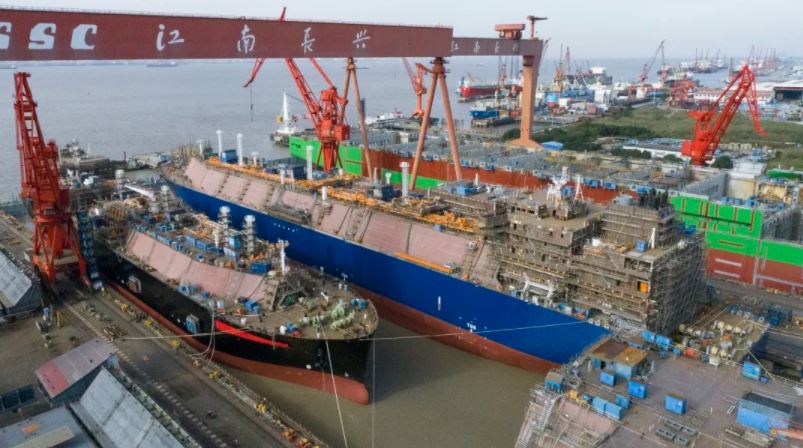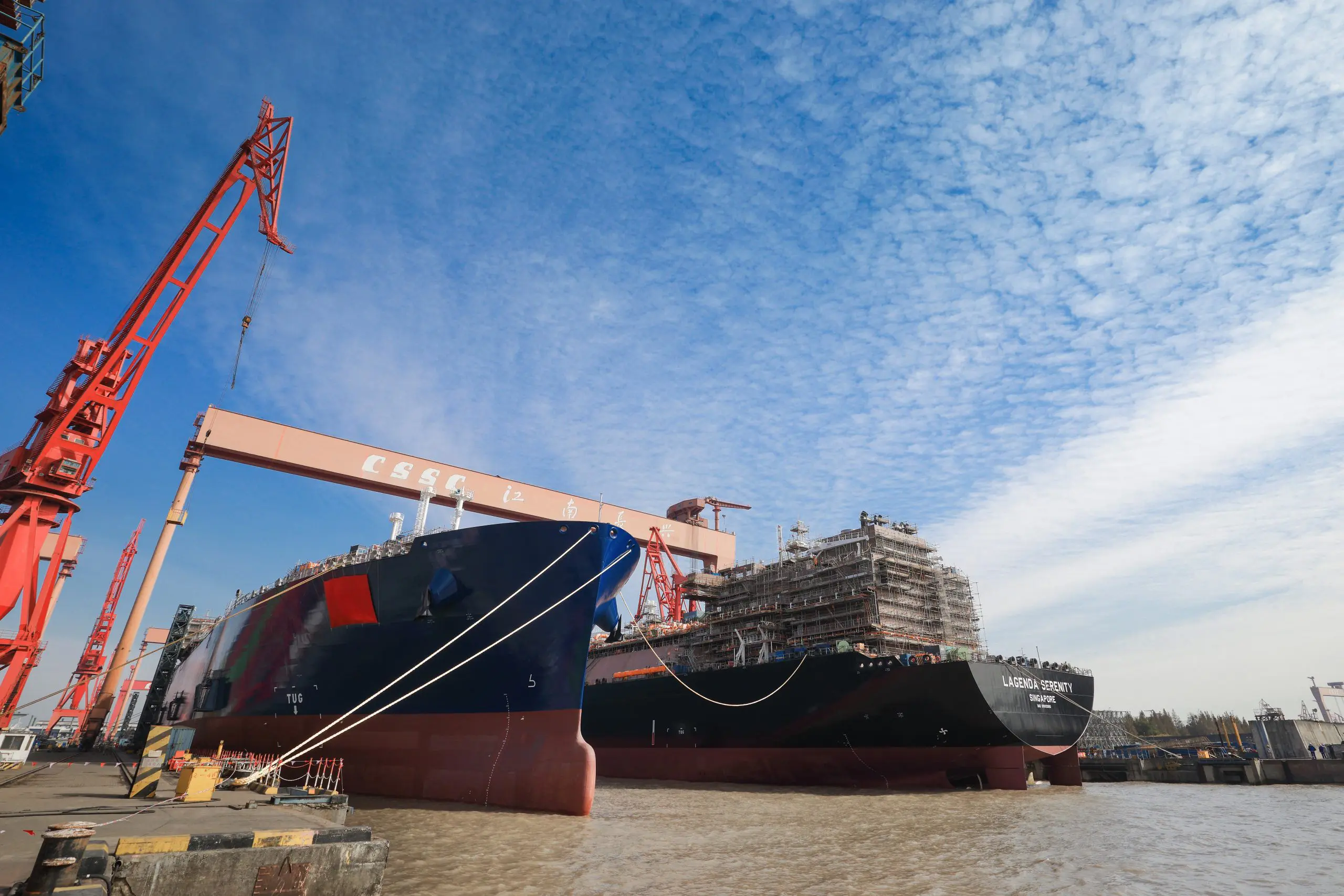Chinese shipbuilder Hudong-Zhonghua has launched the first LNG carrier it is building for compatriot shipowner COSCO and energy giant CNPC.
The state-owned shipbuilder held the launching ceremony on Tuesday.
Hudong held a keel-laying ceremony for this 174,000-cbm vessel in June this year and lifted the last giant block on the newbuild to complete the hull form last month.
This is the first LNG carrier in a batch of three vessels. Hudong is moving forward with works on the second vessel as well.
Following delivery in 2022 and 2023, all of the three carriers will transport LNG for CNPC’s Hong Kong-listed unit PetroChina.
They should ship volumes from Cheniere’s Corpus Christi plant in the US to China.
The PCI project represents the first LNG transportation project developed solely by Chinese companies including COSCO Shipping Energy Transportation, CNPC and Hudong.
All of the vessels will feature WinGD X-DF dual-fuel engines and GTT’s NO96 L03+ containment system.
In addition to these ships, the two partners and Hudong signed a deal earlier this year for three new 174,000-cbm sister LNG carriers.
These carriers are options from the original order the three firms signed in June last year.

K Line’s first LNG carrier launched
Besides launching the 174,000-cbm LNG carrier, Hudong also floated out the first 79,960-cbm LNG carrier the yard is building for Japan’s shipping giant K Line.
According to Hudong, this is the first time that the yard has achieved the simultaneous undocking of two LNG ships.
The ceremony for the 239 meters long ABS-classed vessel took place on Tuesday as well.
This is the first out of two medium-sized LNG carriers.
K-Line will charter both of the ships to Malaysia’s Petronas for a period of 12 years.
They will transport LNG under a long-term deal the Malaysian firm signed with China’s Shenergy Group.
Furthermore, the Wuhaogou-Max (W-Max) vessels will be optimized for the delivery of LNG cargoes to Shenergy’s Wuhaogou terminal in Shanghai.
K Line has recently signed a shipbuilding contract with Hudong for a third medium-sized LNG carrier as well.
The LNG carrier is a sister vessel to the two vessels already under construction at Hudong, sources told LNG Prime.
However, the new ship would have some minor modifications compared to the first two vessels, the sources previously said.

